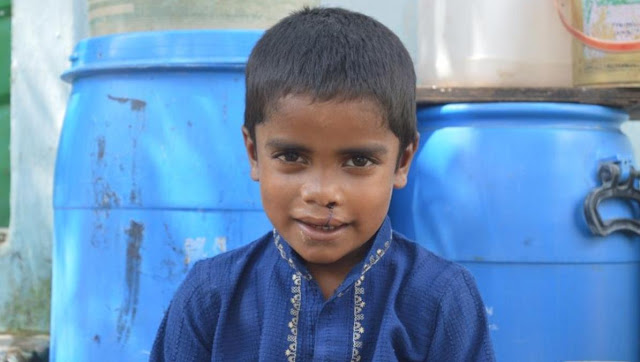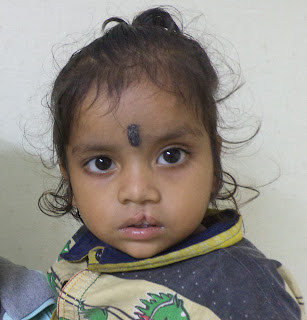KNOW HOW YOUR SUPPORT FOR SURGERY COUNTS!
AND HOW A SIMPLE SURGERY HANGED IBRAHIM AND MEHRIN'S LIFE
____________________________________________________________
Deutsche Cleft ABMSS started a weeklong search and awareness camp in Hyderabad on the eve of World Smile Day last year. Among others, we found two cleft children (Ibrahim and Mehrin) who hail from poor family and they were not in a position to afford the cost of their surgery. During the camp, we could learn about their families and how they have to face difficulty even to bring them to hospital for medical check-up.
Their stories are testimony to how cleft is understood in many communities in our country and why we need extensive search and awareness camps to identify them and convince them for a free cleft surgery. Because for them, impact will begin to show later but agreeing them for a surgery is one of the tedious task to do.
We appealed to our generous donors to support the two needy children who could not wait as they needed a dignified life and especially Ibrahim was very fond of going to school. Your donation did not go in vain; rather impacted to their lives highly.
MOHAMMED IBRAHIM (5 YEARS)
Mohammed Ibrahim hails from a very poor Muslim family who live in Hasan Nagar, a slum in the south Hyderabad. Ibrahim has one brother and a sister younger to him. There the little boy lives with his family in the simplest circumstances. He is already five years old and has not undergone surgery because his parents could not afford the surgery.
Ibrahim is a boy with curiosity. He is interested to know so many things, manages to make friends even if some of them don’t treat him well because of the deformity. His father Muzeeb (42) hardly takes care of their family and its Riswara 32 (Ibrahim’s mother) takes care of her kids.
Ibrahim’s father does not support much to his family since he does not go to work every day. For that, Ibrahim’s grand parents came to front and have always been supporting her. But Roswara works in other’s house to feed their kids.
They needed our help since they can’t otherwise afford to do the operation of the children though they knew that Ibrahim’s operation can be possible and there are some organizations that can help them. But they did not have any information about any organization before our project animator reached out there.
Ibrahim is a positive child. He tries to do everything even if he has to face difficulty while eating, speaking and playing with other school children. He also wants to read because his family members identified one day he was very interested to go to school.
MEHRIN (4 YEARS)
The little girl lives with her parents and four siblings in a poor shelter in a slum in the west of Hyderabad. Mehrin has 2 brothers and two sisters. And she is the third child in the family.
Mehrin’s father Sheikh Moiz (40 years) takes alcohol all the time and does not take responsibility for his family. Even though he works as a carpenter, but most of his income goes in taking alcohol. For that reason, Parveen (31) , Mehrin’s mother had to work as a labourer in a plastic company . With her little income that is the source to feed her family members , she could not think of sending her kids to school. Not a single child of her is enrolled in school.
When Mehrin was born, the neighbours and community members started seeing the child differently. Parveen was worried to see all this was happening with her and she was thinking how Mehrin’s face can be normal like others.
When we told the mother of the free treatment option, they could hardly believe their luck - finally their daughter should get a "new face"! However, it was difficult to take a decision because she could hardly take any decision for her kid as their family was a male dominated ones where females are only allowed to do household stuff and earn for the family. However, Parveen fought with her family for Mehrin’s treatment as she was really worried about her daughter’s future. Mehrin’s life can see a drastic change the way people are looking at her deformity, with multiple surgeries.
The surgery date was postponed by a few days: For Ibrahim, it was finally on October 8, and two days later was also Mehrin from our surgeon dr. Vijay Kumar operates in Hyderabad. As expected, both interventions went very well and without complications. See the result of the surgery and thank-you messages from Ibrahim's grandfather and Mehrin's mother. Since the two children have just been operated on, the mouth is still slightly swollen. But soon, only a fine scar will remember her disfigurement.















